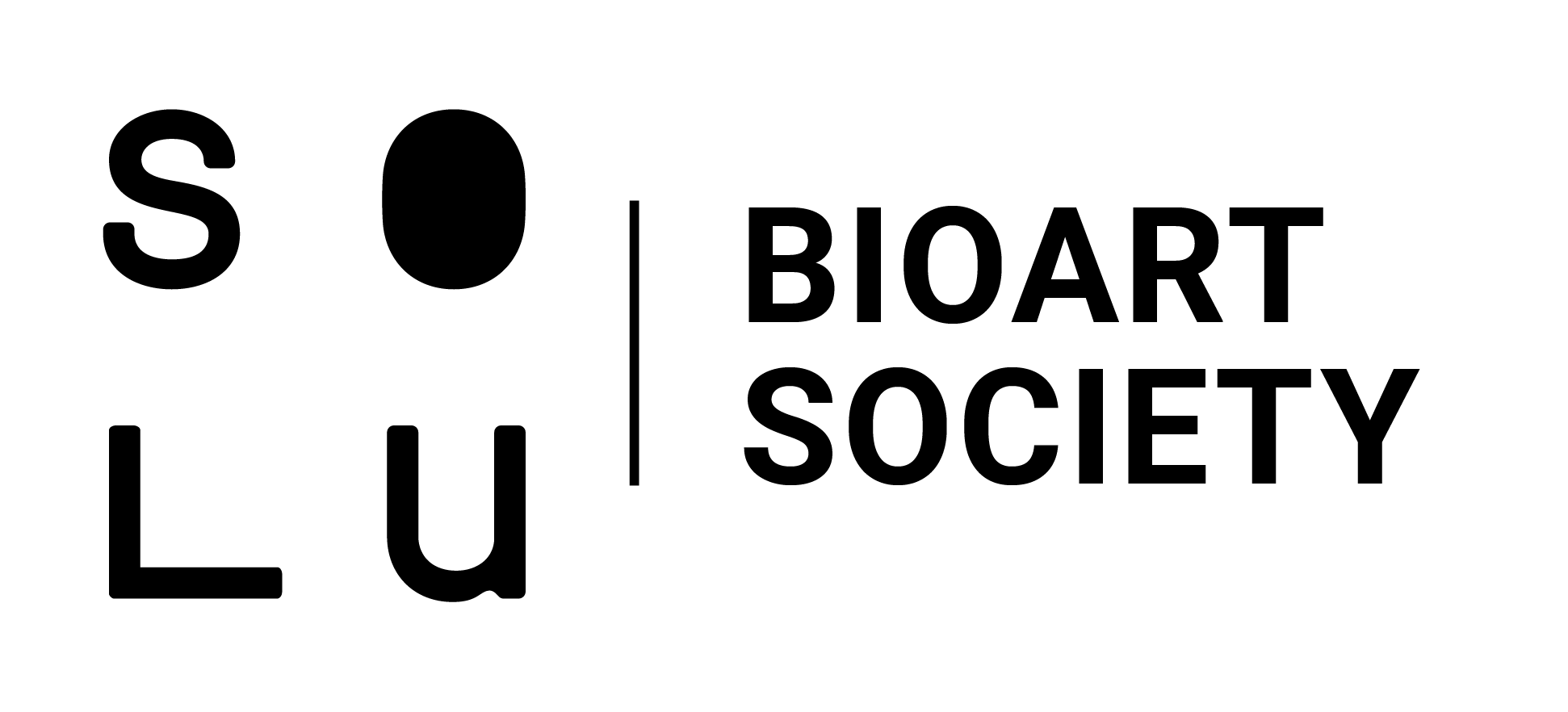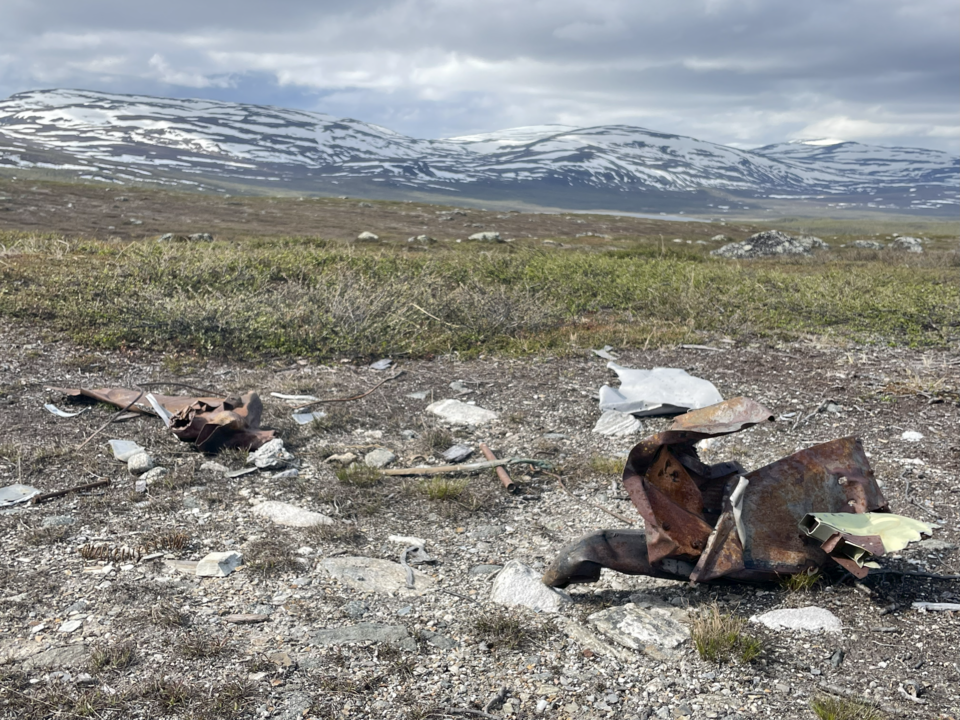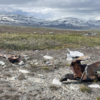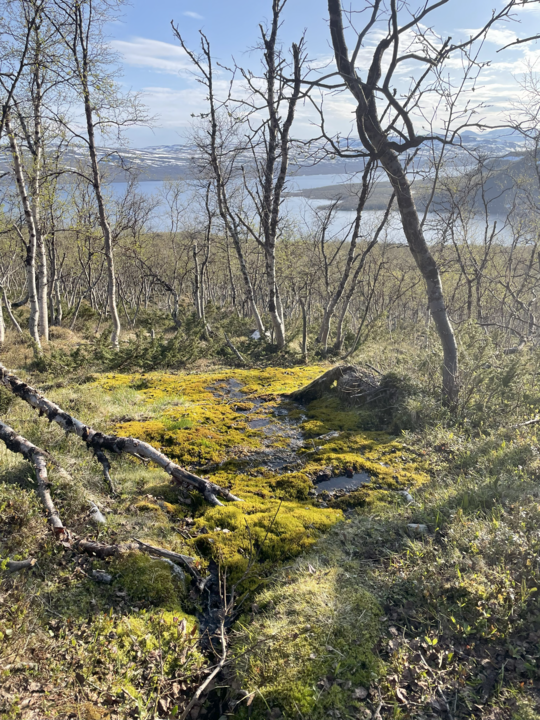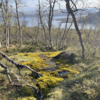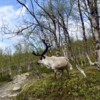No sudden throwing off the blanket
and leaping out into the day, summer
seems tentative
one blossom with no time.
Comes like dreams, spilling over
into sleep, the sun
hunting me with flare.
Terrifying, yet familiar as a hand.
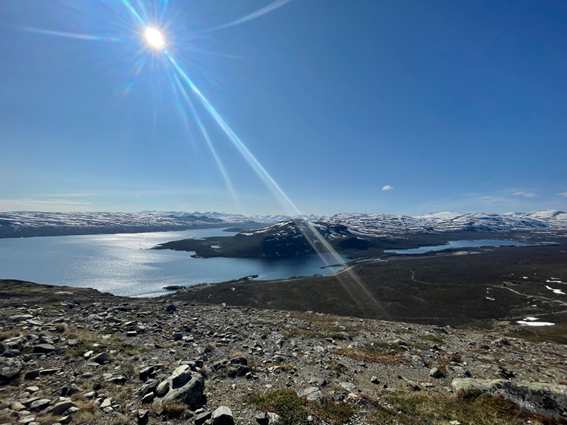
After a long day walk across the Arctic tundra, my legs trembled, and my sweat mingled with the icy wind. As I made my way toward Saana, through silent rocks and its ground cover vegetation, an unfamiliar feeling came to the surface. I sat down on a pile of rocks, carefully arranged by someone who was there before, and took out my not-so-old notebook. The writing that opened this blog entry first emerged. Like an unbidden impulse.
My original intention coming to Kilpisjärvi was to delve into the tundra’s ecosystem, to speculate on a state of liminality – an ambiguity when one state changes to another. Of course I was thinking about the tundra ecosystem, focusing on multiple layers of scientific data produced in the Biological Station and its relational process with the artistic practices. But, as I said, an impulse, and the original plan shifted.
As a Brazilian, from a land where the climate is often warm and the rhythm of days and nights remains steady, the tundra sun unsettled my perception. I simply could not sleep, even with the greenish-black curtains drawn tight in my room at the station. Somehow, the sun haunted me – a strange sensation I had never known before. Even in my homeland, where the sun is pronounced, darkness always arrives at day’s end, offering a cool embrace to our bodies. But not in the Kilpisjärvi summer. Here, the god-sun revealed itself ceaselessly, every second a reminder of its presence.
I let the impulse thrive, and my two-week stay at Kilpisjärvi Biological Station became entirely about writing – or rather, about thinking of writing beyond its mechanical, lonesome form. In my artistic practice, writing with others was not a novelty. I began during the pandemic, isolated on the western edge of the Brazilian Mantiqueira mountain range. Each week, one day at least, I wandered into the hiking places and composed short texts. Always thinking with the agency of others: leaves, rocks, birds, trees, the god-wind – everything I noticed along those hikes that could shift my writing away from mere mechanics. From this experience, a question: What do words truly mean in the depths where they resonate? They are neither mere instruments of barter nor tools to be grasped and cast aside. They carry within them, I believe, an echo beyond the one who writes. Words exceed our intent, as if themselves have agency.
Writing is an embodied practice.
How will my writing process be affected by the Saana? How the agencies of this place – the mild air, the treeless plains, the reindeers crossing, the sharp sting of mosquito bites, the hunting ants I watched during a field trip – how these agencies are taken apart in my writing practice?

And then came a conversation with Leena Valkeapää. She taught me that writing is, above all, a place of becoming. In the past, she had written with others in this very region – the land, the waters, the ancient snow – quiet presences that shape the words before they are even formed.
How might writing be perceived in its own agency? Not through the language we so automatically wield, but perhaps through its trace – marks of presence and becoming, inscribed within a temporality beyond human meaning. Traces like the subtle shifts of the Arctic Tundra, the quiet transformations that unfold over seasons, years, centuries. Yet in the Anthropocene, bio-temporality is interrupted, stifled, silenced.
The experience in Kilpisjärvi made me stay still, even when moving. At a moment when my research had become mechanical – pouring words onto the page without attending to where they might echo. It was a lesson in perception – not just to what I write, but how I write, and with whom.
An experience made possible only by the endless sunlit days, the embodied practice of being fully present in place. For this, I am thankful. Looking ahead, I plan to publish a small book—a collection of writings and photographs gathered during those hikes, moments captured between word and landscape.
The residency period was funded by São Paulo Research Foundation (FAPESP) . A special thanks to the Bioart Society, the Kilpisjärvi Biological Research Station and all the people involved!
